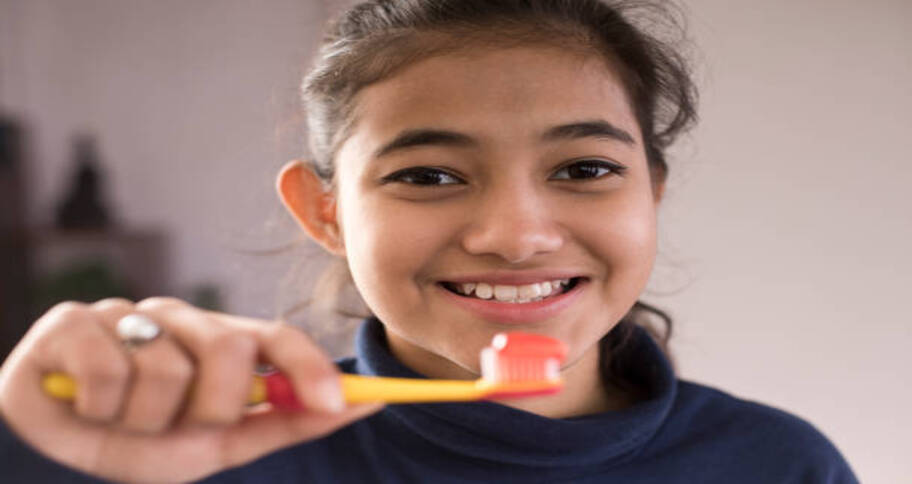Teaching your kids good hygiene practices
By Juhika Mehta |
Date 09-08-2024

Table of Contents
Admissions Open for
Introduction
Teaching the basics of proper personal hygiene is important for keeping kids healthy and clean. It’s especially important for grade-schoolers to practice good hygiene handwashing, in particular—because they spend so much of their time in close contact with each other in the classroom, sharing everything from desks, to chairs, to crayons, to germs.
When your grade-schooler reaches adolescence, hormonal changes will lead to increased oil production and body odor. That’s when you’ll be glad you didn’t wait until then to instill good health and hygiene habits. Here are five fundamental personal hygiene practices to teach your child.
5 Healthy kid’s Good Hygiene Habits are:
1. Hand Washing

Teaching your child how to wash his or her hands is probably the most important health and hygiene habit. Think about all the different objects and surfaces you touch on a daily basis. Hand washing is, without a doubt, one of the best ways to prevent illnesses and stop germs from spreading.
With younger grade-schoolers, you may need to remind them from time to time not to splash and dash, or run their hands under the tap for 2 seconds without soap and call it done.
2. Sneezing and Coughing

Germs travel far and wide. You might already be familiar with the fact that a sneeze travels up to 100 miles per hour and can send 100,000 germs into the air. Research shows that sneezes and coughs can actually travel up to 200 times further than originally presumed. Get your child into the habit of covering his or her mouth and nose with a tissue, or into the crook of their arm if they can’t reach a tissue fast enough.
3. Eyes, Mouth, and Nose
Germs are easily transmitted into the body through the mucous membranes in the eyes, the nose, and the mouth. Remind your child not to touch their eyes or pick their nose.
4. Dental Hygiene

School-aged children have the motor skills necessary to do a fairly good job of brushing their teeth on their own, although you still may want to take a quick turn until they are about 6 or 7. Get your child into the habit of flossing and brushing the tongue, the insides of the cheeks and the roof of the mouth. Use a fun timer to encourage your child to brush longer, like an hourglass filled with colored sand.
5. Bath Time
Many parents find that evening baths are the best way to relax a child before bed. Bathing at night can also help ease the morning rush. Some grade-schoolers prefer showers, which can also save a lot of time on a busy school night or morning. Showers can also save water.
Conclusion

Many kids can shower on their own starting around age 6. You may want to supervise the shampooing and rinsing till he or she gets the hang of it. And be sure to put down a secure bath mat to prevent any slips on the wet floor when they are done.
Also read more:
10 Amazing and the most followed YouTube kids channels for new parents
How to help teenage depression?
Are you aware of the car safety measures for children?
Other Related Sections
NCERT Solutions | Sample Papers | CBSE SYLLABUS| Calculators | Converters | Stories For Kids | Poems for Kids| Learning Concepts | Practice Worksheets | Formulas | Blogs | Parent Resource
CBSE Schools In Popular Cities
- CBSE Schools in Bangalore
- CBSE Schools in Mumbai
- CBSE Schools in Pune
- CBSE Schools in Hyderabad
- CBSE Schools in Chennai
- CBSE Schools in Gurgaon
- CBSE Schools in Kolkata
- CBSE Schools in Indore
- CBSE Schools in Sonipat
- CBSE Schools in Delhi
- CBSE Schools in Rohtak
- CBSE Schools in Bhopal
- CBSE Schools in Aurangabad
- CBSE Schools in Jabalpur
- CBSE Schools in Jaipur
- CBSE Schools in Jodhpur
- CBSE Schools in Nagpur
- CBSE Schools in Ahmednagar
- CBSE School In Tumkur

Call Us to know more about Orchids
Swipe Up



.jpg&w=1920&q=80)












